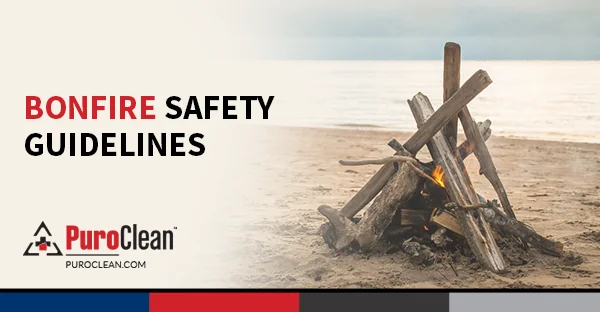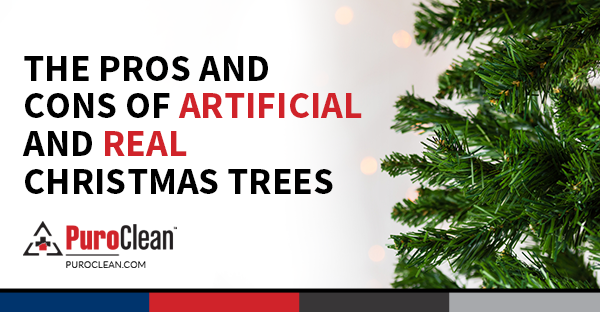Table of Contents
Indoor air quality is often something we take for granted — until something goes wrong. One of the biggest invisible threats to the air we breathe at home is smoke damage. Whether from a house fire, a nearby wildfire, or even years of heavy indoor smoking, smoke can seriously degrade your air quality, leading to long-term health issues and costly home repairs.
In this guide, we’ll dive deep into how smoke affects your indoor air, what signs to watch for, and, most importantly, how to fix smoke damage and restore clean, healthy air in your home.

When Smoke Lingers Beyond the Fire; A story of Sarah and James
When Sarah and James moved into their dream home, they didn’t notice anything unusual at first. The house smelled slightly musty, but they chalked it up to the house being closed for a while. A few weeks later, Sarah started experiencing persistent headaches, and their toddler, Mia, developed a nagging cough that wouldn’t go away.
After multiple doctor visits and air quality tests, they discovered the shocking truth: the previous owner had experienced a kitchen fire two years earlier. Although the walls had been repainted and the surfaces cleaned, the smoke damage had never been properly remediated. Toxic particles were still trapped in the HVAC system, the insulation, and even inside the walls.

It took months of professional smoke damage restoration, air purifiers, and deep cleaning to bring the house’s air quality back to a safe, livable condition. Sarah and James learned a hard lesson — smoke damage is not just about what you can see or smell; it’s about what you can’t.
Understanding Smoke Damage and Indoor Air Quality
What Happens When Smoke Enters Your Home
Smoke is made up of microscopic particles of burned material — plastics, wood, fabric, chemicals — and gases like carbon monoxide, formaldehyde, and volatile organic compounds (VOCs).
Once smoke enters your home, these particles:
- Settle on surfaces like walls, ceilings, and furniture
- Penetrate porous materials like drywall, insulation, carpets, and upholstery
- Circulate through the HVAC system, re-contaminating the air every time you turn it on
The longer the smoke is allowed to sit, the deeper it penetrates and the more difficult (and expensive) it is to fix.
Health Risks of Smoke-Damaged Air
Breathing contaminated indoor air can cause or worsen a range of health problems, including:
- Respiratory issues: coughing, wheezing, asthma attacks
- Chronic headaches and dizziness
- Heart problems
- Eye, nose, and throat irritation
- Long-term cancer risks from toxic chemicals and soot particles
Children, the elderly, and individuals with pre-existing conditions are particularly vulnerable.
Signs You May Have Smoke Damage Affecting Indoor Air
Not sure if your indoor air quality has been compromised by smoke? Look for these signs:
- Persistent smoky or musty odors, even after cleaning
- Yellowish stains or soot marks on walls or ceilings
- Frequent respiratory issues or allergies in your household
- Black dust or particles around vents or filters
- Increased coughing, sneezing, or headaches while indoors
Pro Tip: Even if you can’t smell smoke anymore, that doesn’t mean the problem is gone. Smoke residues can linger invisibly for months or years.
How to Fix Smoke Damage and Restore Indoor Air Quality
Ready to breathe easier? Here’s how to tackle smoke damage effectively:
1. Assess the Damage
Start with a professional indoor air quality test or smoke damage inspection. Experts can use advanced equipment to detect hidden contamination inside walls, ducts, and insulation.
2. Deep Clean Every Surface
Surface-level cleaning is not enough. Smoke particles cling aggressively to surfaces. You’ll need to:
- Wipe down walls, ceilings, and hard surfaces with special smoke-removing solutions
- Steam clean carpets and upholstery
- Wash curtains, bedding, and clothing
- Clean light fixtures, appliances, and electronics (yes, smoke particles get everywhere)
3. Replace Contaminated Materials
If insulation, drywall, or carpet padding is contaminated beyond cleaning, they must be removed and replaced to prevent ongoing air contamination.
4. Purify the Air
Use industrial-grade air purifiers with HEPA and activated carbon filters to trap and neutralize smoke particles and odors.
For serious cases, consider ozone treatments (done professionally) to neutralize remaining odors and bacteria.
5. Clean or Replace the HVAC System
Your heating and cooling system can become a massive source of recontamination if not addressed. You’ll need to:
- Replace all filters (even better, upgrade to HEPA-grade filters)
- Deep clean the air ducts
- Service or replace HVAC units if smoke damage is extensive
6. Monitor Indoor Air Quality
Install indoor air quality monitors to track pollutants in real time and catch issues before they become major problems.

Why DIY Smoke Damage Cleaning Isn’t Enough
Many homeowners try to DIY smoke removal by repainting, spraying air fresheners, or cleaning visible soot. Unfortunately, this usually only masks the problem temporarily.
Smoke damage requires specialized equipment, techniques, and knowledge. Hiring a professional smoke remediation service like this certified smoke odor restoration company is often the fastest, safest, and most cost-effective solution — especially if health is at stake.
The Long-Term Benefits of Fixing Smoke Damage Properly
Investing the time and money to fix smoke damage pays off through:
- Improved health and reduced medical bills
- Restored home value (undetected smoke damage can kill a home sale)
- Peace of mind, knowing your family is safe
- Cleaner, fresher indoor environment
For immediate assistance with Fire damage restoration, contact PuroClean Home Savers, Call (+1) 614-689-0012.
FAQs: The Impact of Smoke Damage on Indoor Air Quality & How to Fix It
Q1: Can smoke damage be completely removed from a home?
Yes, but it often requires professional remediation. Surface cleaning alone isn’t enough. Deep cleaning, material replacement, air purification, and sometimes HVAC cleaning or replacement are necessary steps to completely eliminate smoke particles and odor.
Q2: How long does smoke damage affect indoor air quality?
Smoke damage can linger for months or even years if not properly treated. Smoke particles can embed deeply into materials like drywall, insulation, and ductwork, continuously releasing harmful chemicals into the air.
Q3: What are the first signs that smoke damage is affecting my home’s air?
The most common early signs include:
- Persistent smoky smells
- Respiratory symptoms (coughing, sneezing, asthma attacks)
- Black dust or soot buildup on vents and surfaces
- Yellowish stains on walls or ceilings
Even if you don’t see visible signs, health symptoms alone can suggest a problem.
Q4: Is it safe to live in a house after smoke damage?
Not without professional remediation.
Living in a smoke-damaged house can expose you to toxic chemicals and harmful particles, risking long-term respiratory and heart problems. Always ensure a thorough inspection and cleaning before moving back in after a fire.
Q5: How much does it cost to fix smoke damage?
Costs vary widely depending on the extent of the damage.
On average, homeowners can expect to pay:
- $2,000 to $6,000 for mild to moderate smoke cleanup
- $10,000 or more for severe fire and smoke damage restoration, including material replacement
Getting a few quotes from licensed smoke damage restoration companies is essential.
Q6: What air purifiers are best for smoke damage?
Look for air purifiers that combine:
- True HEPA filters (captures fine smoke particles)
- Activated carbon filters (removes smoke odors and VOCs)
Brands like IQAir, Dyson, and Austin Air are highly recommended for smoke removal.
Q7: Can you paint over smoke damage to fix it?
No, painting over smoke-damaged walls without proper cleaning and sealing only traps odors and contaminants underneath.
Before painting, the surface must be:
- Deep-cleaned
- Treated with special smoke-blocking primers
Otherwise, stains and smells will eventually bleed through.
Q8: Can smoke-damaged furniture be saved?
Sometimes.
Wood, leather, and some fabrics can be professionally cleaned and restored. However, if the furniture has absorbed a lot of smoke or soot, replacement may be necessary for health and safety reasons.
Final Thoughts: Protect Your Indoor Air — Act Fast on Smoke Damage
Smoke damage isn’t just a cosmetic problem — it’s a serious indoor air quality hazard. Left untreated, it can impact your health, your family’s comfort, and the long-term value of your home.
As Sarah and James’ story showed, sometimes what you can’t see can hurt you the most.
If you suspect smoke damage, don’t wait.
Invest in proper remediation, professional air cleaning, and ongoing air quality monitoring to ensure your home stays the safe, breathable haven it should be.
Breathe easy — your health depends on it.


 PuroClean Home Savers
PuroClean Home Savers